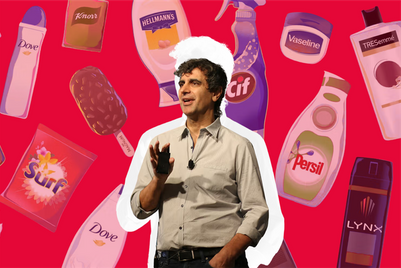
INDIA - Full-time blogging is steadily becoming the norm, and new writers are beginning to realise the potential of aligning themselves with major brands to expand their audiences, according to a new report by EXPD (Experiential Digital & Content).
EXPD, is the digital and content arm of specialist communications consultancy Avian Media and the report, India Blog Trends 2016 is touted as the “first of it’s kind” look into the blogging scene in the country.
The report attempts to explain what the numbers validate, something that may have been around for some time, but had never been analysed and documented in the Indian context.
In response to queries by Campaign Asia-Pacific, Palin Ningthoujam, head of EXPD said that while there is no exact figure that you can put on the number of bloggers in India, a safe estimate is around 50,000 based on the number of members in popular directories.
“Of these, only a few hundred are dedicated to blogging regularly, while the rest are occasional bloggers,” he added. “In terms of reach, some of the top blogs reach up to 2 to 3 million page views per month, whereas the smaller blogs see a few thousand page views per month.”
Almost all bloggers surveyed (90 percent) said they charged a commercial fee for brands who engaged them in content partnerships—around 66 percent charge less than Rs. 25,000 (US$374), while 4 percent charge over Rs 100,000 (US$1,497) on an average.
The report states that 97 percent of bloggers surveyed were open to brands engaging them with information and ideas.
According to EXPD, as bloggers and their medium becomes more popular, there is greater clarity on the revenue model for blogs, as corporations and brands begin to place more emphasis on blogs as an important part of their relationship management framework, brand positioning and stakeholder strategies.
Ningthoujam noted that the majority of marketing and communications departments in organisations include bloggers as part of their outreach today. While traditional media still is a priority, bloggers have become an important influencer community that can't be avoided.
“Blogs and social media have become part of our lives. Blogs come out on searches. They can create impactful conversations and, sometimes stories that start from blogs can grow big enough to be covered by mainstream media as well,” he said.
“Bloggers can give a very different take on a product or service that media won't do, such as experiential reviews, product comparisons, life applications, how-to's and interesting hacks,” he added “To put this in another way, reviews by bloggers slant more towards providing end-users' viewpoint while the traditional media look at a product more like a critic.”
Asked about that the return on investment or measures of success for brands leveraging this channel, Ningthoujam outlined five levels:
- Reach: Page views, unique visitors, and social media shares
- Engagement: Out of the total number of people reached out to, how many were we able to engage?
- Sentiment: How much positive sentiment are we able to create?
- Influence: In decision making of fans and customers
- Blogger loyalty to the brand
“Ultimately, what defines a great campaign success is meeting goals, whatever they may be,” he added. “In addition, we should be able gauge if the campaign has been able to create a change, or start a movement in the society. These are larger impacts that we can look at.”
Brand partnerships with bloggers doesn’t always make for a smooth or contention-free exercise and Ningthoujam pointed to the consultancy’s own IBPA Influencer Engagement Model, which outlines the various stages of influencer engagement.
It starts from the initiation level where engagement is limited to sending out information to advance stages where a close connection is established with the blogger, and both the blogger and client respect one another.
“If we follow this model, I believe we can create successful engagement with everyone,” he added. “Of course, there are always exceptions.”
What happens, when the blogger in question proves difficult but has been identified as a brand’s most ideal influencer based on profile, interests and reach?
“When there is someone too difficult to deal with, despite all efforts, we would recommend giving that influencer some space and let him or her be for some months,” said Ningthoujam.



.jpg&h=334&w=500&q=100&v=20250320&c=1)


.png&h=334&w=500&q=100&v=20250320&c=1)




.png&h=334&w=500&q=100&v=20250320&c=1)







.png&h=268&w=401&q=100&v=20250320&c=1)
